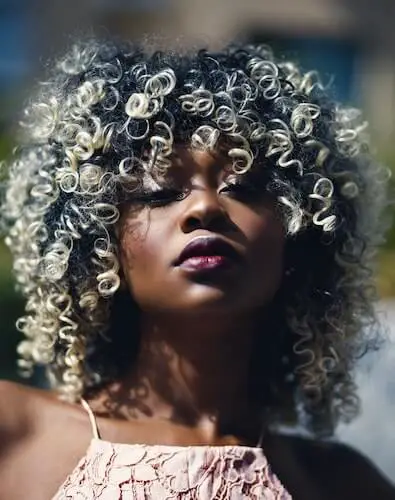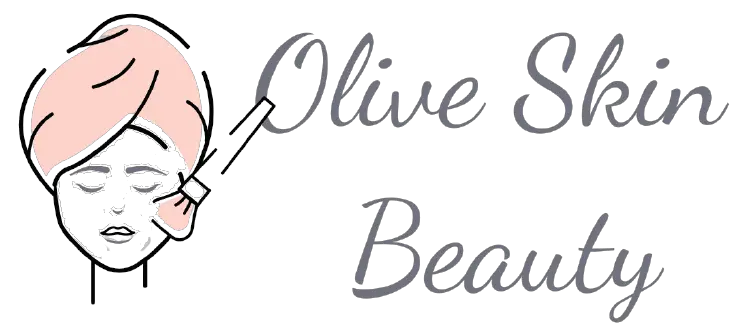Dying your hair a different color can be a great way to change up your look, but what if you don’t have the right skin tone for the color you want? Does that mean you’re out of luck? Not necessarily!
For example, someone with a medium to dark skin tone might dye their hair light blonde. Is this a mistake, or can it actually look good?
There are a few things you can do to help make sure your new hair color looks great, regardless of your skin tone.
Keep reading to learn more.
Different Skin Tones
People have different skin tones depending on factors like genetics, diet, exposure to the sun, and where they are from.

Your skin tone can influence how your new hair color looks with it.
For ease, we’ll look at the following skin tones,
- Dark skin tones
- Medium to Dark Skin Tones
- Light to Medium Skin Tones
- Light Skin Tones
Before you start dying your hair of all sorts of colors, it is important that you take a close look at your natural shade. This will give you an idea of what kind of dye will work best for your specific hair tone.
Dark Skin Tones
Dark skin tones are typically characterized by brown or black hair.
While this may seem like it would make for a pretty boring color palette, many people with darker skin tones have found success using vibrant colors like blue, green, pink, and purple.

If you want to dye your hair light blonde or another lighter shade, you probably won’t have much luck at first. You need to bleach your hair before you can go lighter than your natural tone.
In some cases, you’ll also need to use a lightning agent in order to get the right results.
Medium to Dark Skin Tones
People with medium skin tones tend towards olive tints that can look both golden and greenish under different lighting conditions.
They are likely to have brown eyes and hair that ranges from light brown to black. This color scheme is known as warm because reds are highly prominent among warmer colors.
Some people with olive or darker skin tones are born with blue eyes, but because their hair tends to darken over time, it’s difficult to determine what their natural hair color would be if they hadn’t dyed it.
On the other hand, someone with pale skin might have green or blue eyes and naturally platinum blonde or strawberry-blonde locks.

This is referred to as a cool skin tone because blues are dominant among cooler colors while greens are also prominent. People with naturally blonde hair are often born with either blue or green eyes, but their eye color tends to darken over time.
Since warm colors complement cool colors and vice versa, it would be best for someone with pale skin to choose a hair color that complements the natural shade of their eyes.
For example, if they have green or blue eyes, then they could dye their hair a hue that’s similar to the base color of their irises.
On the other hand, if they have brown eyes, they can pick any color because brown doesn’t contrast well against different shades of reds which are found in warmer colors.
Since darker colors contrast well against lighter ones and vice versa, people with medium to dark skin aren’t limited in their choice of hair color. They might go for deep reds or rich browns if they want warm colors that complement their complexion.
Light to Medium Skin Tones
People with light skin tones tend to have one of three different colors of eyes: blue, green, or brown.
Since all cool colors contrast well against warm colors, people with light to medium skin can choose practically any color they want when dying their hair.
They might opt for deep reds or rich brunettes if they prefer warmer colors that complement their natural eye color.

On the other hand, someone with blue or green eyes would get more mileage out of cooler colors like deep blues and purples while someone with brown eyes could dye their hair brighter shades of blondes and reds without clashing too much against their complexion.
Light Skin Tones
Pale-skinned people should also avoid black hair because it makes them look washed out or ill.
Black is the absolute darkest hair color and it tends to absorb light, so there isn’t much color left visible on your head which can make you look sickly.
If someone with pale skin wants to go for black hair, they should do so in small doses, such as adding an inch of dark brown instead of slipping into jet-black locks immediately.
Dying your hair ash blonde or icy platinum would work well against cool skin tones since they’re cooler shades themselves (that doesn’t mean they’re inherently more flattering, though).
Final Thoughts
Skin tone isn’t an issue when dyeing your hair the right color. You can stick to what you know works well against your natural skin tone or try something different for a change.
As long as you pick a color that compliments your natural eye or hair color, then there’s no reason why dying your hair should be a challenge.
Who knows? Maybe you’ll find a new shade that becomes your signature look!
Hair coloring can greatly change the appearance of a person. Skin tone can be less noticeable with darker colors, but lighter colored hair highlights the skin tone more.
Hair coloring also brings out different features depending on how it affects one’s skin tone and if their complexion matches their dyed hair.
Either way, it’s important to find the hue that looks best on you!

